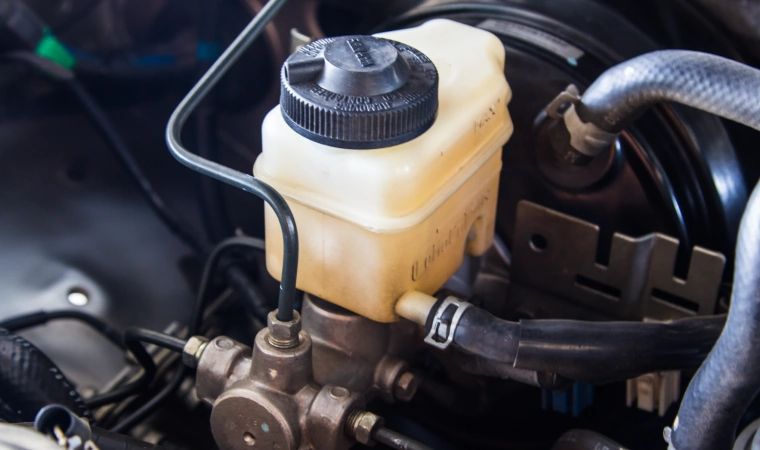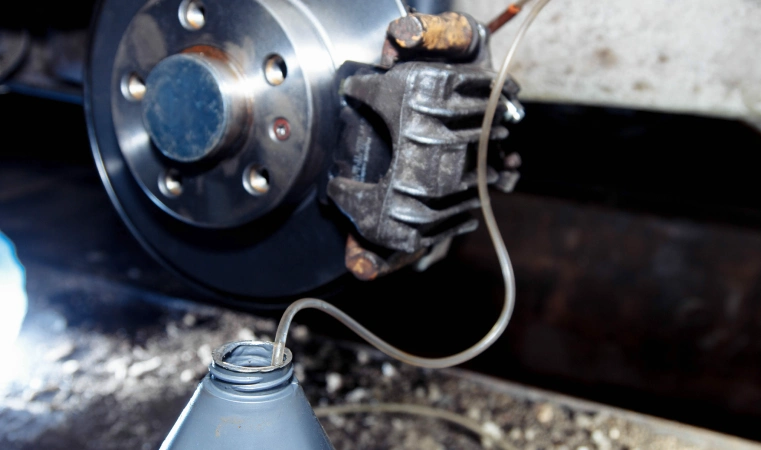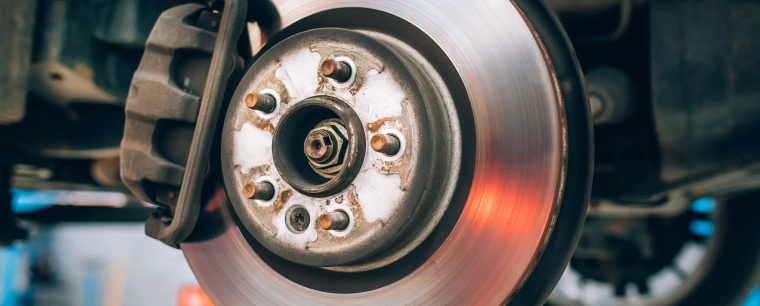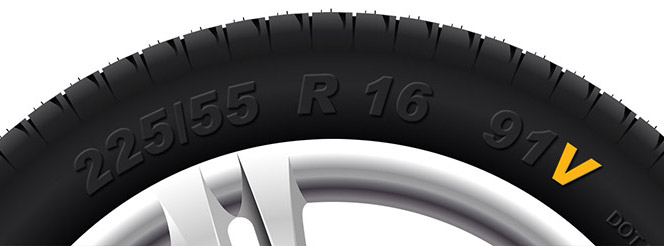What is Brake Bleeding? & How to Do It
Published on: Monday, 20 May 2024 | Author: Jack Dreyer
For the uninitiated, brake fluid can sound like a prank - like ‘headlight fluid’ or ‘tartan paint’. Why would brakes need fluid? But, brake fluid definitely exists and it has an extremely important part in the health and safety of your car.
Brake fluid, also known as hydraulic fluid, amplifies your car’s braking and acts as a lubricant, preventing corrosion and wear in the moving parts of your brakes. We will go more into what brake fluid actually is and how it works shortly, but, essentially, without it your brakes would simply stop working. Occasionally, air gets trapped in the valves which contain the fluid, so it is necessary to bleed them from time to time in order to remove this air.
Read on to find out more about brake fluid and how you can properly bleed your brakes.
What is brake fluid and how does it work?
You’ll first need to access your master cylinder to start this process, so understanding where that is in your car will help you going forward. The master cylinder is within the engine compartment. It will be under the brake fluid reservoir, a kind of bottle or plastic container which contains fluid. It looks like a metal cylinder attached to a large disk which is the servo housing.
The master cylinder contains pistons which compress when you press down on your brake pedal. This then allows the brake fluid to travel under increasing pressure within the brake lines. These lines divert the force of the pushed pedal into the front and rear brakes and the fluid converts the energy into braking pressure that causes brake pads to press against and squeeze the brake rotors. This then slows down the rotors until they come to a halt.
So, it is the pressure which is applied to the fluid along the lines which creates that conversion, and this is why the fluid is hydraulic. Without that fluid, there wouldn’t be a way to make your brake pads move.

Why bleed your car’s brakes?
As you can imagine, when you pressurise fluid over and over again, air forms in the brake lines and compresses, whereas the pressure applied to fluid forces it into the brake corners. This means the efficiency of your brake is compromised and can lead to a “soft brake”. If too much air enters the brake line, your brake could stop working altogether.
Technically any fluid could be used, however, when you attempt to apply that much pressure to a fluid, it heats up and boils easily. Boiling will release vapour which creates the same problem as air entering the system. For this reason, it’s better to use brake fluid which has been specifically developed to withstand those higher temperatures.
Nevertheless, occasionally during services, upgrades, and higher temperatures, air enters the system and lowers the effectiveness of your brake.
How do you know if you need to bleed your brakes?
There are some telltale signs that can indicate when your brakes need bleeding. You probably need to bleed your brakes if:
- Your brake pedal feels soft, mushy, or spongy when you press down
- Your stopping power is decreased, making stopping take longer
- You need to pump the brakes
- You’ve replaced any component of your braking system
- It has been 2 years since you last bled your brakes
If you have anti-lock brakes (ABS) this guide likely won’t apply to you, so you’ll need to go for a service as specialist tools are needed to identify and solve the problem with these kinds of brakes.
We also have a general guide on how to spot other brake issues here.

A guide to bleeding your brakes
So, now you know how brake fluid works and why you would need to bleed your brakes let’s go over how it’s done. Whilst we recommend going to a garage to bleed your car’s brakes, some drivers feel comfortable doing this themselves. If you want to bleed your brakes yourself then follow our handy steps below.
First off, let’s go over what you need:
- Safety gloves
- Jack and axle stands
- Spanner that fits your car’s bleed nipples
- Penetrating fluid
- A tube which can fit over the bleed nipples
- A container for the fluid
- Floor covering to catch leaking fluids
- Brake fluid
- Help from another person
Remember to turn off your car and not have it running unless your manufacturer has said otherwise.
Step 1: Fill up the master cylinder
Firstly, find the master cylinder which is usually under the bonnet. Fill it to the maximum marking before you begin and make sure to keep it topped up as you go.
Step 2: Locate the bleed nipples
On either the brake calliper or wheel cylinder you can find the bleed nipples. Starting from the brake furthest away from the master cylinder, loosen the first one with a spanner just a tad. Don’t fully turn it.
Step 3: Put a tube on the bleed nipple
Now, take your tube and put it over the bleed nipple, leaving the other end inside the empty container which will catch your fluid. Make sure it’s snug and secure, you don’t want any leaks.
Now, loosen the bleed nipple. Penetrating fluid can help here if you need it.
Step 4: Depress the brake pedal
This is where it helps to have another person. They can now depress the brake and you should see fluid begin to enter the tube, possibly with air bubbles too.
It’s completely normal for the pedal to sink at this point. So hold it down and when the fluid is no longer coming out you can close the bleed nipple.
Don’t release the brake until the bleed nipple is fully closed as this will suck in air again, so make sure it is nice and tight before you release the brake.
You want to repeat this process on the same bleed nipple a few times until the fluid in your tube is clear and has no air bubbles. Close the nipple, release the brake, loosen the nipple, depress the brake. Think of it in those simple terms.
Step 5: Repeat for the other bleed nipples
Once your fluid is clear, close the bleed nipple you’re working on, remove the tube and work your way around the car, preferably ending with the brake closest to the master cylinder.
Just make sure that all the bleed nipples are properly closed before you pack everything away.
Step 6: Test your brakes
Now you can test your brakes. If they still feel soft or mushy then you will need to do it again. If you keep bleeding your brakes and nothing is changing, then you should bring your car in for a service.
Brake bleeding summary
To recap what we’ve covered: brake fluid is essential for making your brakes work — but occasionally air can enter the system for a number of reasons which weakens your brake. Therefore, it’s important to bleed your brakes to remove this air.
Go through the steps we’ve outlined until your brakes feel firmer. If no matter what you try, they still feel soft or have poor stopping power, you will need to take your car in for a service. In which case we would recommend you visit our experts at your nearest centre. No appointment necessary, just pop on in.
In the meantime, keep up to date with the latest motoring, brakes, and tyres guidance on our Advice Hub or contact us with any questions.




